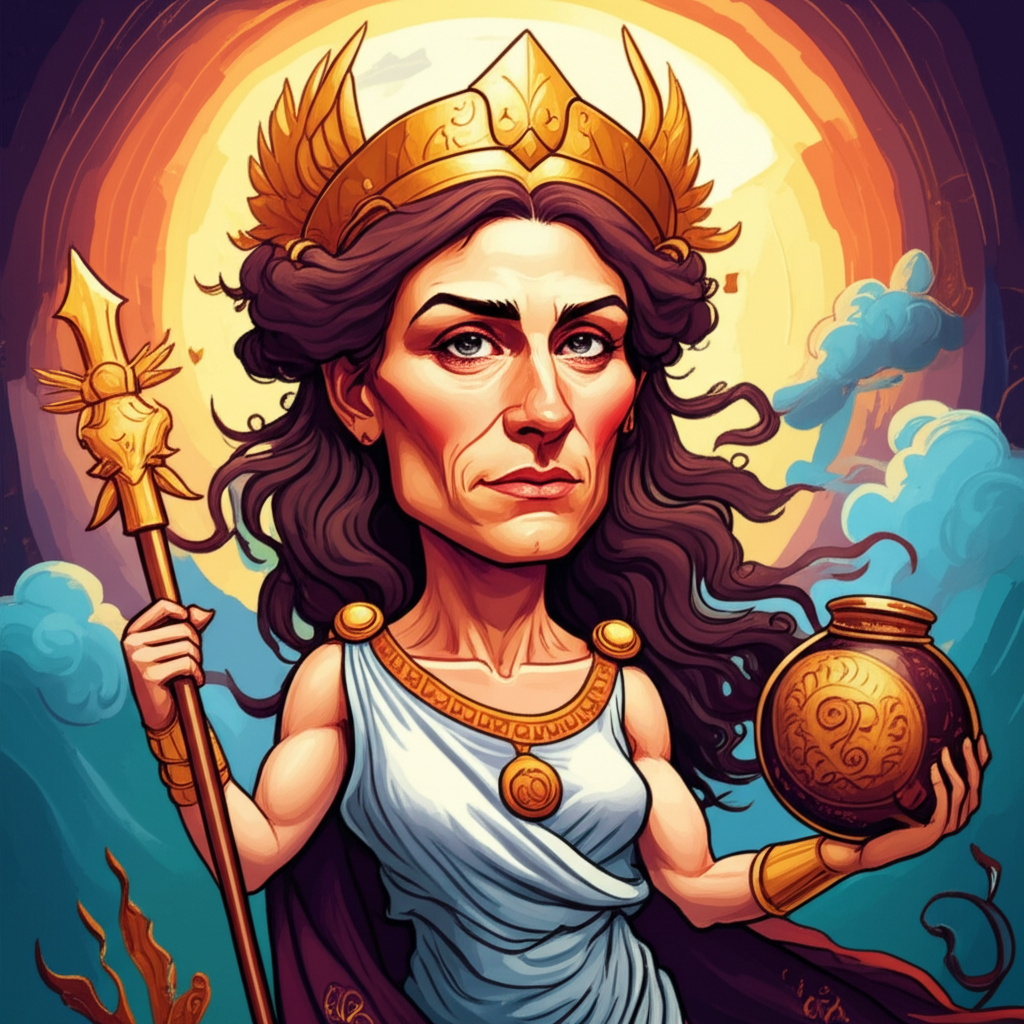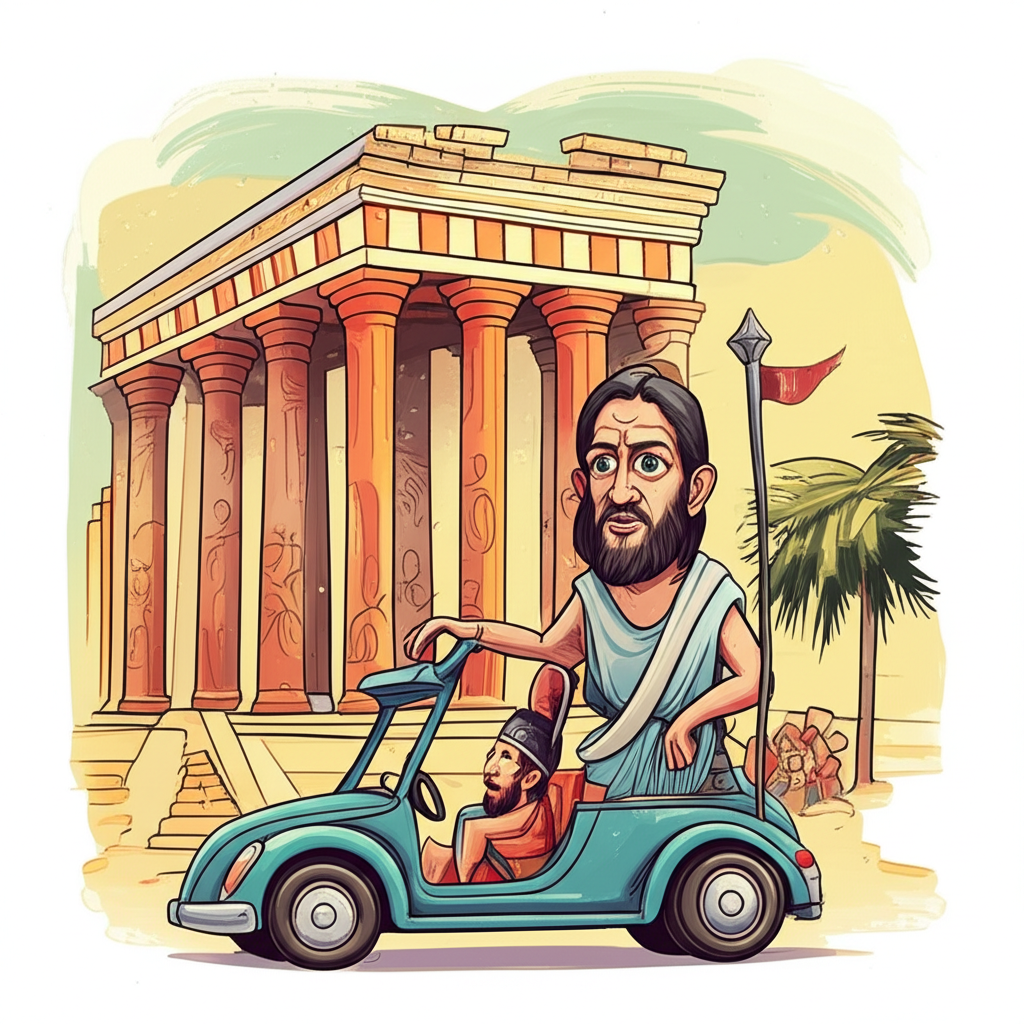
From the sun-drenched shores of ancient Greece, where marble temples kissed the azure sky and epic tales echoed through bustling agoras, springs a rich tapestry of myths and legends. These narratives, woven by the imaginations of people long past, served as a vibrant way to understand their world, its forces, and their place within it. Among these profound stories, the trials and triumphs of the Olympian gods, and the cataclysmic conflicts they supposedly waged, offer a fascinating glimpse into the ancient Greek worldview. One such imagined confrontation, deeply intertwined with the queen of the gods, Hera, is the legendary Gigantomachy, a cosmic struggle that tested the very foundations of divine order.
The cultural era that gave rise to these myths, broadly known as the Archaic and Classical periods of ancient Greece (roughly 8th to 4th centuries BCE), was a time of burgeoning city-states, philosophical inquiry, and artistic innovation. The world, as perceived by these ancient peoples, was a realm populated by powerful, often capricious, divine beings who influenced every aspect of human life. Natural phenomena – the fury of a storm, the bounty of a harvest, the unpredictable currents of the sea – were often attributed to the actions and emotions of these gods. Myths provided a framework for explaining these forces, offering narratives of creation, order, chaos, and the eternal struggle for dominance. The Gigantomachy, in this context, represents the ultimate battle against primal, untamed chaos, a force that threatened to overthrow the established order of the cosmos.
At the heart of this narrative is Hera, a figure of immense power and complex character within the Greek pantheon. She is often depicted as the majestic queen of the gods, wife and sister to Zeus, the thunder-wielding king. Hera’s symbolic attributes are multifaceted. She is revered as the goddess of marriage, childbirth, and family, embodying the societal structures that bound ancient Greek life. Yet, she is also known for her fierce jealousy, her vengeful nature, and her unwavering pride. These traits, while seemingly contradictory, reflect the ancient Greek understanding of power and authority, where immense responsibility often coexisted with potent personal passions. In the context of the Gigantomachy, Hera’s role is not merely that of a passive consort, but an active participant, her strength and resolve tested alongside the other Olympians.
The Gigantomachy, as recounted in ancient texts, paints a vivid picture of a cataclysmic war that erupted between the gods of Olympus and the Giants, monstrous beings born from the earth itself. These Giants, often described as colossal in size, with serpentine legs and fiery eyes, were said to possess immense strength and a primal, untamed fury. They were the embodiment of chaos, a threat to the very cosmos established by the younger gods. The narrative unfolds with the Giants, spurred by their mother Gaia (Earth), rising up to challenge the rule of the Olympians. They hurled mountains and blazing trees, their roars shaking the heavens.
During this monumental struggle, the Olympians, led by Zeus, fought with all their might. Each god wielded their specific powers: Poseidon with his trident, shaking the seas; Apollo with his arrows; Athena with her strategic prowess. Hera, as queen, stood firm, her courage and determination a crucial element in the divine defense. While specific accounts of her direct combat prowess vary, her presence and unwavering support were essential. Some tales suggest she actively participated in the fray, while others highlight her role in rallying the other gods and bolstering their resolve. The trial of the Gigantomachy, therefore, was not just a physical battle, but a test of the gods’ unity and their commitment to maintaining the cosmic order they had established. The narrative emphasizes the immense effort required to subdue these primal forces, culminating in the eventual defeat of the Giants, who were either imprisoned beneath mountains or slain by the gods.
The symbolism embedded within the Gigantomachy is profound and speaks volumes about the ancient Greek worldview. The Giants themselves represent the raw, untamed forces of nature and the primal chaos that existed before the structured order of the cosmos. Their defeat signifies the triumph of order over chaos, of civilization over barbarity, and of the established divine hierarchy over elemental, uncontrolled power. Hera’s participation, particularly her role as queen, underscores the importance of stability and legitimate authority in maintaining this order. Her potential struggles with jealousy and vengeance, while sometimes portrayed negatively, also reflect the complex nature of human and divine relationships, where power and emotion are inextricably linked. The myth, in essence, provided a narrative justification for the established social and cosmic order, asserting that the Olympian gods, with all their imperfections, were the rightful rulers.
In the modern world, the Gigantomachy and its characters, including Hera, continue to resonate within our cultural landscape. These ancient myths are retold and reinterpreted in literature, from epic poems to contemporary fantasy novels. They are visualized in films and graphic novels, offering grand spectacles of divine warfare. In video games, these powerful beings often serve as formidable adversaries or playable characters, their legendary battles brought to life through interactive narratives. Beyond entertainment, these myths remain a rich subject for academic study in fields like classics, comparative mythology, and religious studies, providing insights into the beliefs, values, and anxieties of ancient societies.
It is important to reiterate that the Gigantomachy, and the figures within it, are products of ancient storytelling traditions. They represent the imaginative explorations of people in a bygone era, attempting to make sense of their world. As Muslims, we understand that only Allah is the true Creator and Sustainer of all existence. These ancient narratives, while culturally significant, are not to be considered divine or factual. They are valuable for understanding the rich heritage of human imagination, the evolution of storytelling, and the enduring human quest to comprehend the forces that shape our lives. The tale of Hera and the trial of Gigantomachy, therefore, serves as a captivating window into the minds of our ancestors, a testament to their ability to craft grand narratives that continue to spark curiosity and reflection even today.





